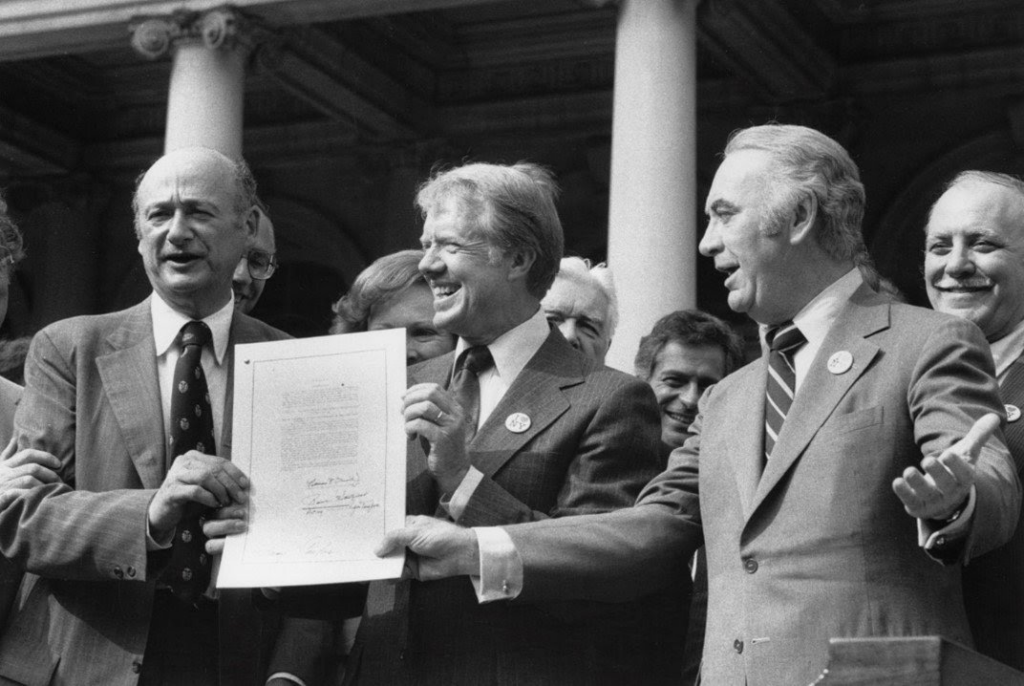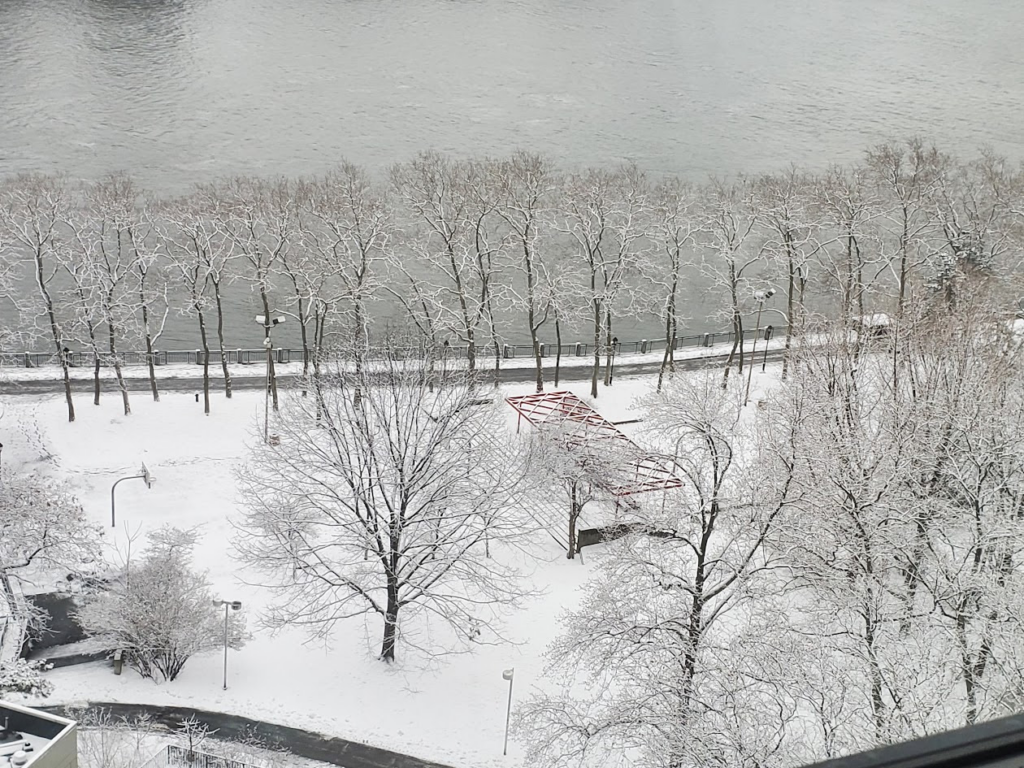Weekend, February 15-17, 2025 – IN THIS TURBULENT TIME, READ OF THE RELATIONSHIP BETWEEN CARTER & NYC



IT’S PRESIDENTS DAY
&
NEW YORK AND PRESIDENT JIMMY CARTER
WEEKEND, FEB. 15-17, 2025
ISSUE #1397
New York Municipal Archives

New York City government offices, including the Municipal Archives, close on the third Monday in February for Presidents Day. Banks, schools, the United States Post Office, and the New York Stock Exchange also observe the holiday.
Archives collections document some presidential moments in the City’s history, highlighted in For the Record articles.
In 2024, For the Record traced the residences of President George Washington in George Washington in New York: The First Presidential Mansion.
In 1968, President Lyndon Baines Johnson signed the Uniform Holiday Bill that set specific Mondays to celebrate Washington’s Birthday, Memorial Day and Veteran’s Day as well as establishing Columbus Day as a Federal Holiday, effective in 1971. The goal was to establish a minimum of five three-day weekends for federal workers. As Johnson stated in his approval message, “The bill that we sign today will help Americans to enjoy more fully the country that is their magnificent heritage. It will also aid the work of Government and bring new efficiency to our economy.”
President Abraham Lincoln’s birthday, February 12, was never a national holiday but was a State holiday in many places, including New York. In 2018, the For the Record article Bodies in Transit displayed an entry about the assassinated President Lincoln as an example.
Presidents Day officially celebrates Washington’s birth, which was made a federal holiday in 1885, and is still named Washington’s birthday for federal workers. As noted above, some states and municipalities mark both births, closing government offices on Lincoln’s Birthday, February 12, and Presidents Day on the third Monday. Conversely, it is business-as-usual in ten states that do not mark Presidents Day as a holiday. Clever marketers coined the term Presidents Day in the 1980s to combine the commemorations.
Another recent blog described President Jimmy Carter’s history with the City: New York and President Jimmy Carter.

Mayor Edward Koch, President Jimmy Carter, New York Governor Hugh Carey, on the steps of City Hall following approval of Federal loan guarantees for New York City, August 8, 1978. Mayor Edward Koch Photograph Collection, NYC Municipal Archives.
The Presidents featured in these For the Record posts made significant contributions to the nation. Let us honor their work during this holiday weekend.
January 8, 2025
New York and President Jimmy Carter
On October 5, 1977, President Jimmy Carter visited the South Bronx. “The Presidential motorcade passed block after block of burned-out and abandoned buildings, rubble-strewn lots and open fire hydrants, and people shouting, “Give us money!” and “We want jobs!” Twice Mr. Carter got out of his limousine, walked around and talked to people. He said the Federal Government should do something to help, but he made no specific commitment.” —The New York Times, October 6, 1977.
The pleas Carter heard from the residents of the South Bronx are essentially what the President heard from New York City officials throughout his administration: We want money, and we want jobs!
Beginning in the 1930s, Mayor Fiorello LaGuardia established a financial relationship between the City and the Federal Government that has continued to this day. It began with Federal funds from President Franklin Roosevelt’s New Deal programs that the LaGuardia administration used to lift the City out of the Great Depression. With seven million inhabitants and dozens of “shovel-ready” public works projects, New York received more funding than any other city.
Since then, City finances have been inextricably linked to, and reliant on, federal sources. For a while, it worked. From the 1930s through the 1960s, federal funding flowed, with support for highways and housing as notable examples. By the 1970s, however, new administrations in Washington with different priorities became less sympathetic to urban needs. For New York City, the famous New York Daily News headline on October 30, 1975, “Ford to City: Drop Dead,” summed up the change in relationship.
The election of Jimmy Carter to the White House in 1976 gave New York officials hope for an improved relationship with their Federal counterparts. Researchers interested in documenting the history of the connection between City finances and the Federal Government will be well rewarded by information in the Municipal Library and Municipal Archives collections.
The Municipal Library’s vertical files on Federal-City Relations are a particularly rich resource for investigating the dramatic story of New York’s fiscal crisis, and recovery, in the 1970s. Although the immediate peril to the city’s economy had passed by the time Carter took office in January 1977, intense negotiations between City, State, and Federal authorities continued throughout his administration. “Carter Cool to Plea on New York’s Loan,” (New York Times, February 1, 1977), and “Carter Opens Drive for Passage of Bill on Aid to New York,” (New York Times, May 9, 1978), are just two examples of the many, almost daily, clippings in the vertical file that chart the ups and downs of efforts to fix the City’s budget
Delving into the Municipal Archives collections to document President Carter’s relationship with the City brings researchers to the Mayor Beame collection. During the Abe Beame administration mayoral correspondence was sent to “central files” where clerks separated letters into different series, e.g. Subject Files, Departmental Correspondence, General Correspondence, and Correspondence with State and Federal offices. The clerks further refined this arrangement by separately filing “President” correspondence.
Mayor Beame’s “President” file for 1977 contains copies of the letters he wrote to President Carter recommending people for jobs in the new administration. In April, the Mayor began to address economic conditions in his correspondence with Carter. On April 20, 1977, he sent a dense three-page letter urging the President to consider the effects of defense spending on employment. “The Mayors of the nation’s older urban centers want our cities to continue their historic role as major contributors to the American economy… by assuring that these communities receive a fair share of authorized Defense spending, the federal government can provide an important stimulus to the private sector economics of these cities.”
The file does not include a response from Carter directly addressing Beame’s concerns regarding unemployment, but on May 11, 1977, the President wrote to the Mayor about the Comprehensive Employment and Training Act (CETA): “I am writing you to emphasize the continuing urgency of our battle against high unemployment. I anticipate that Congress will soon approve the funds we have requested… to double the number of public service jobs provided under CETA.” Carter went on to urge Beame to “…do everything possible to minimize procedural delays… in filling these new jobs.”
When Mayor Edward Koch took office as Mayor in January 1978 the “central file” system, with correspondence arranged in series, seems to have been abandoned. Although this makes research in Koch administration records somewhat more challenging, archivists created a key-word searchable inventory for a portion of his records—essentially what would have been his subject and departmental files.
Typing ‘Carter’ into the search box identified a folder of correspondence between the Mayor and the President. In a letter to President Carter, dated February 20, 1980, Koch got right to the point: “I wish to bring you up to date on the progress being made to close New York City’s projected budget gap and to acknowledge the assistance being provided by your staff in identifying additional sources of federal aid.” In three typed pages Koch delineated measures related to Medicaid, Welfare, and Education Aid, and attached a six-page memorandum prepared by the Mayor’s Office of Management and Budget that detailed “Federal Actions.”
Four months later, on June 20, 1980, Koch wrote to President Carter’s Chief of Staff, Jack Watson, about funding needed for the CETA program, and scrawled “Please Help!” under his signature. Koch again used the personal approach in an August 1980 handwritten note to Carter: “Here is the memo you asked that I send to you when we traveled together to the Urban League. Congratulations on the outcome of the Convention. Now we have to pull it all together.” He signed it, Your friend, Ed. Although the convention went in Carter’s favor, the general election in November did not.
Jimmy Carter’s connection to New York City did not end with his Presidency. His work for the Habitat for Humanity organization brought him back to New York. In 1985 he met with Department of Housing Preservation and Development Commissioner Anthony Gliedman on the roof of a building on East 6th Street in Manhattan where Carter had been working with the Habitat group.

MORE THIS WEEKEND?
CREDITS
NEW YORK CITY MUNICIPAL ARCHIVES
KENNETH COBB
All image are copyrighted (c) Roosevelt Island Historical Society unless otherwise indicated
THIS PUBLICATION FUNDED BY DISCRETIONARY FUNDS FROM CITY COUNCIL MEMBER JULIE MENIN & ROOSEVELT ISLAND OPERATING CORPORATION PUBLIC PURPOSE FUNDS.


Copyright © 2024 Roosevelt Island Historical Society, All rights reserved.Our mailing address is:
rooseveltislandhistory@gmail.com

Leave a comment